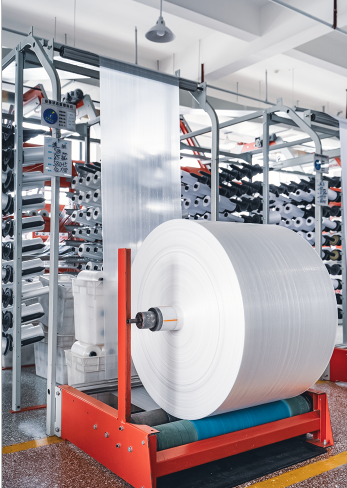Choose automatic bag filling machine systems if you handle high volumes continuously and have the budget for upfront investment. Pick manual bag filling equipment if you have smaller batches, tight budgets, or need flexibility for frequent product changes.
The choice between automation and manual systems affects everything from daily operations to long-term profitability. Understanding these differences will help you pick equipment that matches your actual needs.
Manual bag filling equipment requires human operators to position bags, start filling cycles, and remove completed packages. These systems handle the weighing and dosing automatically, but you control the process at each step.
This hands-on approach works well for operations that need flexibility. If you’re packaging different products throughout the day or working with varying batch sizes, manual systems adapt quickly to changes without complex reprogramming.
Manual systems also cost significantly less upfront compared to automatic options. That can make them attractive for smaller operations or businesses just starting out in automated packaging.
Manual bag filling equipment works best for:
Industries handling specialty products often prefer manual systems because operators can make immediate adjustments based on product characteristics or quality requirements.
Automatic bag filling machine systems handle the entire process from bag placement through sealing with minimal human intervention. These systems excel at consistent, high-volume production where speed and uniformity matter most.
The technology in automatic systems includes advanced features like vibration systems for sticky products, multiple sealing options, and integrated quality control. It also means these systems can handle various bag types including valve bags, gusseted bags, and form-fill-seal configurations.
Automatic systems reduce human error significantly. When you’re packaging products where consistency affects quality or regulatory compliance, automation provides the reliability manual processes can’t match.
High production capacity: Automatic systems process much larger volumes than manual operations, often handling 100+ bags per hour depending on product and bag size.
Consistent quality: Machines follow exact specifications every time, ensuring uniform fills, proper sealing, and consistent bag positioning.
Reduced labor costs: While requiring higher upfront investment, automatic systems reduce ongoing labor expenses significantly over time.
Better working environment: Automated systems create cleaner, safer workspaces with less physical strain on workers.
Sand bag filling machine operations typically favor automatic systems because sand is abrasive and heavy. Automated handling reduces worker fatigue and provides consistent fill weights important for construction applications.
Bulk bag filling machine systems often benefit from automation because of the large volumes and weights involved. Automatic positioning and filling prevent injuries while ensuring proper FIBC bag alignment.
Automatic big bag filling machine systems handle the complex process of positioning, filling, and removing large FIBC bags safely. The automation prevents costly accidents while maintaining consistent fill levels.
Flour bag filling machine: Flour operations benefit from automatic systems that prevent dust issues and provide consistent weights critical for commercial baking applications.
Grain bag filling machine: Grain handling often uses automatic systems because of the high volumes and need for precise weights in agricultural markets.
| Factor | Manual Equipment | Automatic Systems |
|---|---|---|
| Initial Cost | Lower ($20k-50k) | Higher ($100k-500k+) |
| Operating Costs | Higher labor costs | Lower labor, higher maintenance |
| Production Speed | 20-40 bags/hour | 100-200+ bags/hour |
| Flexibility | High | Moderate |
| Consistency | Variable | Excellent |
The break-even point typically occurs when your volume exceeds what manual systems can handle efficiently. If you’re packaging more than 50-100 bags per hour consistently, automatic systems usually justify their cost through labor savings and increased output.
Big bag filling machine systems often use semi-automatic approaches that combine manual bag positioning with automatic filling and sealing. This hybrid approach provides automation benefits while keeping costs manageable.
Semi-automatic bag-filling machines work well for businesses transitioning from manual to full automation. They let you gain automation experience while maintaining operational flexibility.
While XIFA doesn’t manufacture automatic or manual bagging machines, we specialize in producing high-quality packaging bags designed to work perfectly with both types of filling equipment. Our customized packaging bags wholesale operations provide bags engineered for optimal performance with your chosen machinery.

Our packaging bag products include:
XIFA’s 40-acre manufacturing facility produces packaging bags to exact specifications that work reliably with both manual and automatic filling systems. Our 25 years of experience serving major clients ensures consistent quality whether you’re using manual bag filling equipment or high-speed automatic systems.
For comprehensive specifications on our packaging bag options, check our product catalog showing various bag configurations designed for different filling equipment types and production requirements.
Consider your current production volume, available budget, and growth projections when choosing between manual and automatic systems. If you’re handling consistent high volumes, automatic systems provide clear advantages. For smaller operations or those requiring maximum flexibility, manual equipment often makes more sense.
Work with experienced suppliers who understand how packaging bags interact with different filling systems. Quality bags designed for your specific equipment type ensure reliable performance whether you choose manual or automatic filling solutions.




